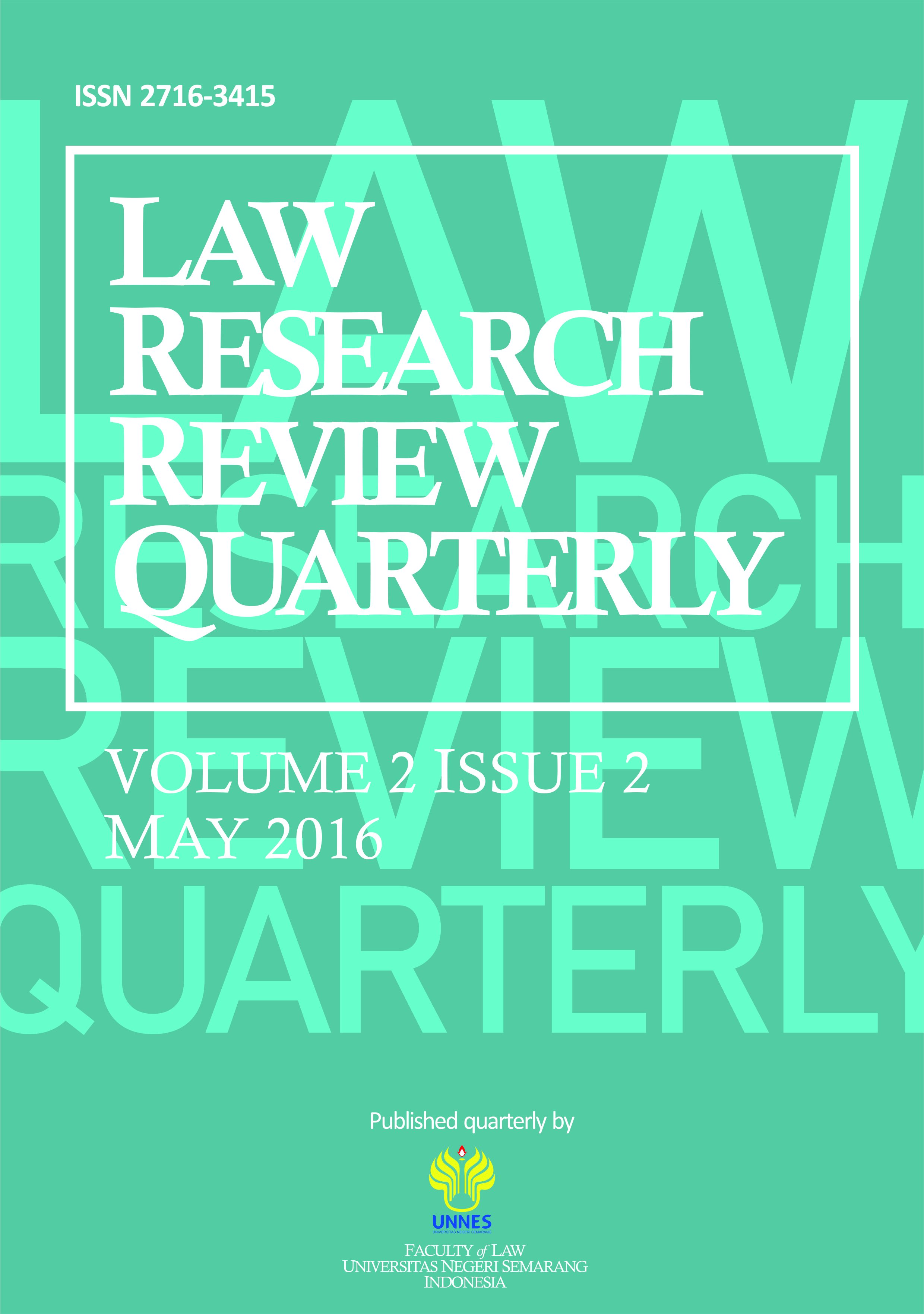Legal Model Fulfillment of the Right to Education as a Constitutional Rights of Citizens in the Border Region of Kab. Nunukan Prov. North Kalimantan
Main Article Content
Abstract
The issue of policy on the protection of citizens' rights, especially related to the rights of education in the border region, has so far been fraught with various weaknesses, even further compounded by the neglect of the principles of justice and sustainability in the management of resources in border areas oriented to the fulfillment education rights. In fact, not infrequently there are conflicts due to underdevelopment, backwardness and poverty of citizens in border areas when compared to neighboring countries. This study uses the normative juridical method, namely research relating to norms that exist in the 1945 Constitution and other legislation related to the object of research, using the Statute Approach approach and this research is also completed with data empirical data related to the research object. The results of this study concluded that the Local Government Policy must be in line with the fulfillment of the constitutional rights that have been guaranteed by the Indonesian constitution, relating to the Regional Government of Kab. Nunukan in the context of fulfilling the right to education of citizens in the border region is contained in the Nunukan Regency Regulation Number 05 of 2012 concerning Management and Implementation of Education. Whereas the legal model for the fulfillment of the right to education of citizens in the border region must refer to the constitutional rights of citizens guaranteed in the Indonesian constitution and in accordance with the Ecosob and the principles of providing education in accordance with The National Education System and Human Rights Law
Article Details
All writings published in this journal are personal views of the authors and do not represent the views of this journal and the author's affiliated institutions. Author(s) are retain the copyrights of the Article. However, before publishing, it is required to obtain written confirmation from Author(s) in order to ensure the originality (Author Statement of Originality). The statement is to be signed by at least one of the authors who have obtained the assent of the co-author(s) where applicable.This work licensed under a Creative Commons Attribution-ShareAlike 4.0 International (CC BY-SA 4.0)
